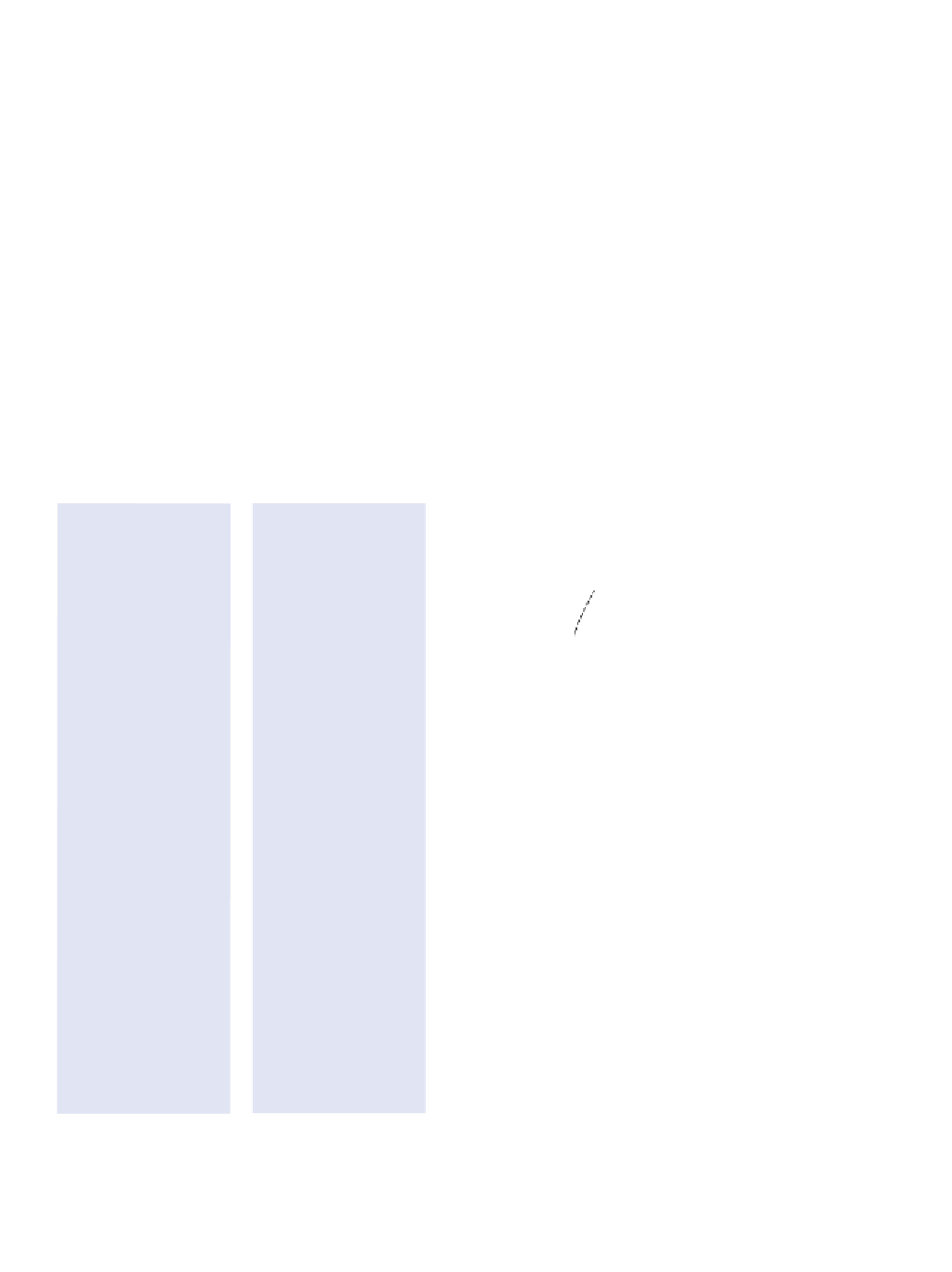Geoscience Reference
In-Depth Information
marine sediments and associated rhyolite-granite intru-
sions were compressed and thrust-faulted with older
terranes to form the eastern Andes. Active subduction, as
the Atlantic opened after 135 Ma, formed the western
Andes by progressive arc-continent collision with the
South American plate and associated landward volcanic
and intrusive igneous activity (
Figure 24.7
).
Molasse
sediments, from vigorous syn-formational erosion, and
ignimbrite deposits from eruptive volcanoes collected in
intercordilleran and marginal basins (
Plate 24.4
).
These
are best developed in sedimentary rocks seen in the
Altiplano of southern Peru and Bolivia, and Puña plateaux
ignimbrites of northern Chile and Argentina.
The Andes rise steeply from a narrow Pacific coastal
plain
southern Colombia and Ecuador,
200 km wide and
rising to peaks above 5 km. The Andes widen steadily
through Peru to a maximum of 750 km in northern Chile
and Bolivia, where the main east and west chains (5·5-7·0
km high) diverge around the Bolivian Altiplano. The
system narrows again to
250 km wide and falling to
2·5-4·0 km in southern Chile, south of the highest peak,
Nevos Ojos del Salado (7,084 m) on the Chile-Argentina
border. The Andes now run out in Tierra del Fuego,
having formally continued into the Transantarctic
Mountains of Antarctica before breaching by the Scotia
arc.
North American orogens are more complex. Head-on
subduction has combined with the split and lateral
movement of an older (Farallon) plate
and
oblique
continental override of the East Pacific Rise mid-ocean
ridge. The latter induced transform faulting, including
the San Andreas fault, and crustal extension forming
125 km wide and extend the entire length of South
America. Four divergent lower cordillera, emerging from
the Central American-Caribbean orogens, fuse into the
Cordillera Oriental (east) and Occidental (west) of
(a)
(b)
(c)
W
Jurassic
E
Island arc
Trench
Sea
Granite diapirs
Cretaceous - early Cenozoic
Back-arc basin
Trench
Sea
Sea
Nazca
Plate
Nazca
Plate
Nazca Plate
Altiplano
Eastern
Cordillera
Late Cenozoic
Western
Cordillera
Sub-Andean
folds
Thrust faults
Trench
Coast
Sea
0
1000
0
1000
km
km
Asthenosphere
Lithosphere
Western Cordillera
Coastal Cordillera
Eastern Cordillera
Central Cordillera
Precambrian basement
Sediments
Andesite
Sub Andes
Craton
Altiplano
Granite
Metamorphics
Oceanic crust
Figure 24.7
The form and origin of the Andes. (a) Principal Andean cordillera, etc. (b) Granite batholiths (c) Formation of the
Peruvian-Bolivian sector from island arc-continent collision.
Source: In part after James (1973)

















































































































































































































































































































































































































































































